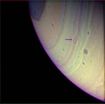(Press-News.org) Interactions between proteins are at the heart of cellular processes, and those interactions depend on the interfaces where the direct physical contact occurs. A new study published this week suggests that there may be roughly a thousand structurally-distinct protein-protein interfaces – and that their structures depend largely on the simple physics of the proteins.
Believed to be the first systematic study of the nature of the protein-protein interfaces, the research could help explain the phenomena of "promiscuous" proteins that bind to many other proteins. The results could also have implications for the development of drug compounds designed to affect these protein-protein interactions.
"Proteins and the rules of protein-protein interactions are the result of very simple physical principles," said Jeffrey Skolnick, director of the Center for the Study of Systems Biology at the Georgia Institute of Technology. "In this study, we set out to characterize the nature of the interfaces – the structures of the interfaces – in all known protein structures. We wanted to ask how much of the interface could be explained purely by the structural features of the proteins without involving evolution or intelligent design."
A paper on the research was published Dec. 13 in the early edition of the journal Proceedings of the National Academy of Sciences. The work was sponsored by the National Institutes of Health (NIH).
Skolnick and collaborator Mu Gao studied the structural similarity of protein-protein interfaces involving interactions between dimers, developing an efficient computational method called iAlign to classify the interfaces known to exist among native proteins. They found that even without structural similarity between the individual monomers that form dimeric complexes, roughly 90 percent of the interfaces had a close structural neighbor.
"We found that in the library of protein-protein structures that nature has available, there are about a thousand structurally-distinct interfaces," said Skolnick, who is a Georgia Research Alliance Eminent Scholar in computational systems biology. "You can have very different types of protein structures adopting the same interface, but it was still surprising to see such a small number."
To obtain the kind of bonding measured experimentally requires that interfaces have sufficient surface area, so Skolnick believes most interfaces are roughly planar, much like two Nerf balls pressed together. "If you take this spherical interface and blunt it, that creates a much larger surface interface, so most of the interfaces that we saw are actually planar," he said. "You need to have enough sticky surface area."
To separate the role of the proteins' basic physical structure from the effects of the amino acids that they gain through an evolutionary process, the researchers studied a set of synthetic homopolypeptide proteins created totally in the computer to mimic natural proteins. After conducting docking tests on these "toy proteins" decorated with random amino acids, Skolnick and Gao observed 90 percent of the interfaces that they had previously characterized in the natural proteins.
"This suggests that the interfaces we see are features of the protein structure and the protein physics," Skolnick said. "Proteins seem to be primed by their physical characteristics to enable these higher-order molecular interactions to occur with a significant probability. The capacity is a feature of the structure."
That means the interfaces are independent of the kind of secondary structure that each protein has and uncoupled from the global fold that each protein adopts. "If the interaction between the proteins doesn't depend on the internal geometry of the structure or the secondary type of folding, that allows the possibility of having one protein interface with many interactions," Skolnick said.
The planar nature of the interfaces and their similarity could help explain the promiscuity observed among a number of proteins. If the surfaces were highly specific, it wouldn't be possible for these proteins to interact with so many different proteins.
"If you have a background capacity to interact, then you could imagine that this is the origin of a lot of promiscuous interactions that you see in cells," he said. "The surfaces are essentially complementary, and by accident you happen to have an appropriate constellation of amino acids. The more stable interactions clearly need to have undergone some kind of selection procedure to stabilize them enough to stick."
Skolnick believes that the basic physics of the proteins therefore forms a foundation on which evolution – everything the protein encounters – can act. "We are examining the basic rules of the road that evolution takes advantage of over time," he said.
Understanding these rules helps clarify the complex operation of cellular structures – and potentially give drug designers a new pathway to exploit.
"Promiscuity of interactions appears to be a feature of biological systems, and this bears on drug discovery," Skolnick said. "There are now very few drugs that inhibit protein-protein interactions because of the surface areas that are involved. Knowing the nature of these interfaces and the rules governing them might allow us to figure out how to design an inhibitor better."
Knowledge that protein interfaces are primed for promiscuity helps explains the observations in biology, but open up some new questions. For one, how do cells maintain order if each protein can interact with many other proteins?
"It may be like being at a crowded New Year's Eve party in which everybody is wearing weak flypaper," Skolnick suggested. "How do you reach the person you want to meet when you are sticking to people you don't want to interact with? How do you assemble anything useful when all the parts stick together?"
INFORMATION:
Study classifies and uses artificial proteins to analyze protein-protein interfaces
2010-12-16
ELSE PRESS RELEASES FROM THIS DATE:
p53 determines organ size
2010-12-16
In studies conducted on the fruit fly, researchers at IRB Barcelona headed by ICREA Professor Marco Milán have revealed that organs have the molecular mechanisms to control their proportions. In this process the protein p53 plays a crucial role. The study is published today in the prestigious journal PLoS Biology.
The correct establishment of organ proportions, which occurs during embryonic development, is vital for the proper function of all organisms. Alterations in the mechanisms responsible for these processes cause fatal errors in embryos and even cause their death. ...
Hospice care increasing for nursing home patients with dementia
2010-12-16
PROVIDENCE, R.I. [Brown University] — A new study of nursing home records shows more residents with dementia are seeking a hospice benefit and using it longer. The study also estimates that 40 percent of nursing home residents die with some degree of dementia. Researchers hope the new data will help policymakers preserve the hospice benefit even as they seek to control Medicare costs.
In newly published research analyzing data on more than 3.8 million deceased nursing home residents, researchers at Brown University and Hebrew SeniorLife/Deaconess Medical Center in Boston ...
Cyclone lasting more than 5 years is detected on Saturn
2010-12-16
Researchers from the University of the Basque Country (UPV/EHU) have been monitoring a cyclone on Saturn for more than five years. This makes it the longest-lasting cyclone detected to date on any of the giant planets of the Solar System. Images from the Cassini probe were used to carry out this study.
"Cyclones – where the wind turns in the same direction as the planet – do not usually last for a long time, and so we were interested to discover one that had gone on for several years on Saturn", Teresa del Río-Gaztelurrutia, lead author of the study and a researcher at ...
Fabric softener sheets repel gnats
2010-12-16
MANHATTAN, KS – For years, gardeners have claimed that putting Bounce® fabric softener sheets in their pockets is an effective way to repel pests like mosquitoes and gnats. Any Internet search will uncover countless articles about the bug-repelling properties of Bounce®. Are these claims valid or simply folklore? The authors of a new study say that until now, no quantitative data has existed to substantiate these claims, but their latest research has revealed a definitive answer: Bounce® sheets do indeed repel adult gnats.
In a report just published in HortScience, Kansas ...
Put on the brakes after foot or ankle surgery
2010-12-16
Patients recovering from a right foot injury or surgery should think twice about how soon they want to begin driving again. According to a new study from the Journal of Bone and Joint Surgery (JBJS), it takes much longer to brake when the driver is wearing an immobilization device - like a splint or brace, than it does when wearing normal footwear.
Driving is important to many people's social and professional lives, so when a person's right ankle or foot must be immobilized after an injury or surgery, one of the first questions an orthopaedic surgeon hears is, "When can ...
Marinomed's iota-carrageenan effective against H1N1
2010-12-16
Carrageenan, is a polymer derived from red seaweed which helps to create a protective physical barrier in the nasal cavity and has proven to be an effective antiviral in the treatment of the common cold. The present study assessed the efficacy of Carrageenan against influenza viruses, including the pandemic H1N1 influenza strain. Results showed that the polymer directly binds to influenza viruses, effectively blocking the virus from attaching to cells and spreading further. In animal experiments, Carrageenan demonstrated equivalent efficacy when compared to the drug Tamiflu. ...
Plant consumption rising significantly as population grows and economies develop
2010-12-16
Humans are consuming an increasing amount of the Earth's total annual land plant production, new NASA research has found.
As the human population continues to grow and more societies develop modern economies, this rate of consumption is increasing both as a whole and on a per capita basis globally. In addition to as food, plants are consumed for paper, clothing, livestock feed, firewood, biofuels, building and packaging materials, among other uses.
A NASA research group led by Marc Imhoff at NASA's Goddard Space Flight Center, Greenbelt, Md., first quantified this global ...
New research finds delaying surgical procedures increases infection risk and health care costs
2010-12-16
CHICAGO (December 15, 2010) – Delaying elective surgical procedures after a patient has been admitted to the hospital significantly increases the risk of infectious complications and raises hospital costs, according to the results of a new study in the December issue of the Journal of the American College of Surgeons.
The occurrence of infection following surgical procedures continues to be a major source of morbidity and expense despite extensive prevention efforts that have been implemented through educational programs, clinical guidelines, and hospital-based policies. ...
Opportunity leads to promiscuity among squirrels, study finds
2010-12-16
University of Guelph researchers have finally figured out why female squirrels are so darn promiscuous. Turns out it has nothing to do with genes and everything to do with how many males are knocking at their door.
"Their behaviour is overwhelmingly influenced by opportunity," said graduate student Eryn McFarlane, who, along with integrative biology professor Andrew McAdam and a team of researchers from across Canada, solved a mystery that has baffled biologists for years.
Their findings appear in the Royal Society Journal Biology Letters.
Female squirrels are less ...
'Green genes' in yeast may boost biofuel production by increasing stress tolerance
2010-12-16
An effort to increase biofuel production has led scientists to discover genes in yeast that improve their tolerance to ethanol, allowing them to produce more ethanol from the same amount of nutrients. This study, published in the December 2010 issue of Genetics (http://www.genetics.org), shows how genetically altered yeast cells survive higher ethanol concentrations, addressing a bottleneck in the production of ethanol from cellulosic material (nonfood plant sources) in quantities that could make it economically competitive with fossil fuels.
"Our hope is that this ...


